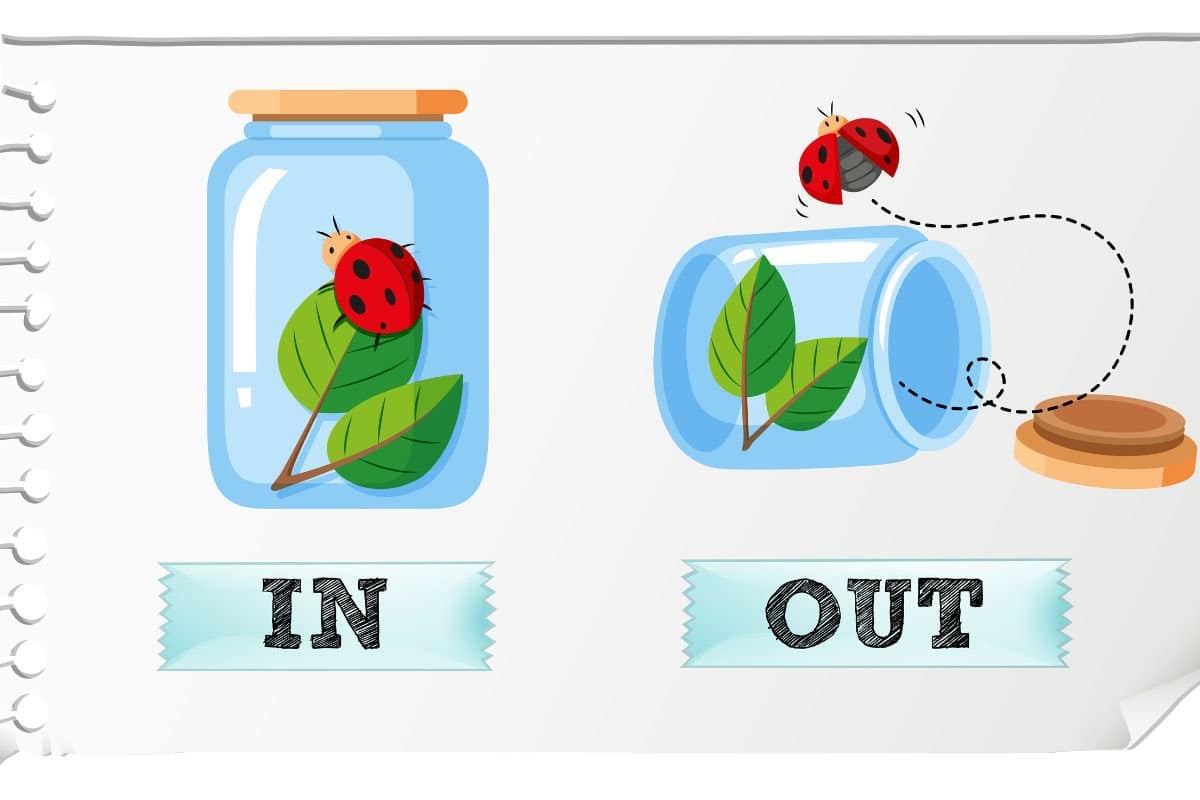Let’s say you ask, “Where’s my phone?” and someone replies, “It’s the table.”
Silence.
The table? What does “the table” mean? Your mind starts thinking.
Is it on the table?
Under it?
Inside a drawer in the table?
Beside it? Behind it?
Floating above it like a magician’s trick?
You’re still phone-less. Still guessing. All because one tiny, but crucial word was missing.
That word is called Prepositions.
Prepositions are the tiny words that carry all the power.
Without them, a conversation can’t make proper sense. The table is not a location. Say “the phone is on the table” and now it makes sense.
What are prepositions of place? Prepositions of place are a part of speech that show exactly where something is positioned.
In this blog, we’ll cover what prepositions of place are, the most common ones you use all the time, easy examples, and how to use prepositions of place in practical ways to teach or remember them.
Let’s dive in.
Key Takeaways
- Prepositions of place are parts of speech that show where something is positioned compared to other things.
- Position prepositions show where things are. Direction prepositions show where things go. Proximity prepositions show how near or far things are from each other.
- Think IN as inside a box, ON as sitting on top, AT as pointing to a dot. These visual cues help you choose correctly.
- Overgeneralization and native language interference cause most mistakes. You’ll have to focus on physical relationships rather than memorizing exceptions that don’t follow patterns.
- Some phrases like “at home” and “on the bus” sound right because they’ve evolved that way. When rules don’t help, trust what feels natural.
- Use prepositions in real-life – directions, conversations and descriptions. It sticks better than memorizing rules.
What Are Prepositions of Place?
Suppose you’re searching for your phone while already running late.
You call out to your roommate, “Where’s my phone?” They yell back, “It’s the table!”
Wait… what? ON the table? UNDER the table? BESIDE the table?
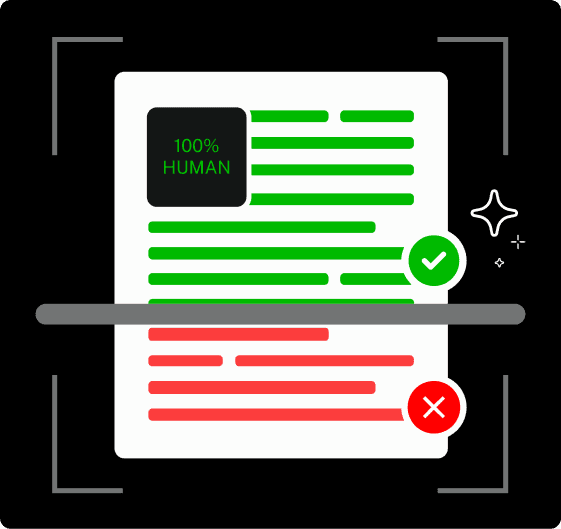
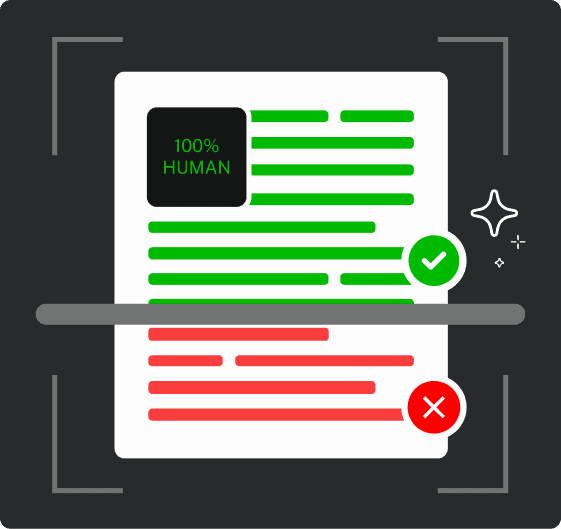
Never Worry About AI Detecting Your Texts Again. Undetectable AI Can Help You:
- Make your AI assisted writing appear human-like.
- Bypass all major AI detection tools with just one click.
- Use AI safely and confidently in school and work.
That tiny missing word just turned a helpful answer into a scavenger hunt.
This is exactly why prepositions of place matter.
A preposition of place shows where something or someone is positioned compared to other things around it.
Preposition + Noun = Prepositional Phrase
For example:
So “on the table” becomes your complete location description.
Here’s how the pattern looks like:
Someone + does something + preposition of place + location
For example,
- Lubna sits ON the couch.
- The cat hides UNDER the bed.
- Your keys are IN the drawer.
They answer the question, “Where?”
Where’s your bag?
- It’s next to the door.
Where’s your dog?
- He’s in the garden.
Here’s a quick test: If you can physically point to where something is, you probably need a preposition of place to describe it properly. Try it right now.
Look around and point to three things. Notice how your brain automatically wants to say “on the desk,” “by the window,” or “near the door”?
Common Prepositions of Place
Now that you understand what are prepositions of place, let’s explore the most common ones you’ll use daily.
There are three types of prepositions of place:
- Position (where something is)
- Direction (where something is going)
- Proximity (how near or far something is)
Now let’s zoom in on the groups that trip most people up.
1 – Position
These three types of prepositions of place are common, but they also confuse everyone:
IN = Something surrounds or contains the object.
- Your coffee is IN the mug.
- You live IN Chicago.
ON = Something touching a flat surface.
- Your laptop sits ON the desk.
- You walk ON the sidewalk.
AT = Think specific point or exact spot.
- Meet me AT the library.
- I’m AT 123 Main Street.
Here’s the memory trick to remember the position type.
IN = inside a box
ON = sitting on top
AT = pointing to a dot.
2 – Position/Proximity
BESIDE and NEXT TO = Right there with you.
- “Sit beside me” feels closer than “sit next to the wall.”
BETWEEN = Stuck in the middle of two things.
- The pharmacy is between the bank and the coffee shop.
AMONG = Mixed in with a group.
- She found her keys among the papers on her desk.
3 – Position
ABOVE and BELOW = Think elevator floors.
- The bird flies above the trees.
- The basement is below the kitchen.
UNDER = Direct underneath with something over it.
- The cat sleeps under the bed.
4 – Direction
TO and FROM = Show movement.
- Drive to the store, then come back from the store.
THROUGH = Going inside and coming out the other side.
- Walk through the park.
ACROSS = Going from one side to the other side.
- Run across the street.
Sometimes native speakers can’t even explain why we say “on the bus” but “in the car.”
The logic isn’t always perfect, but these patterns will get you right most of the time.
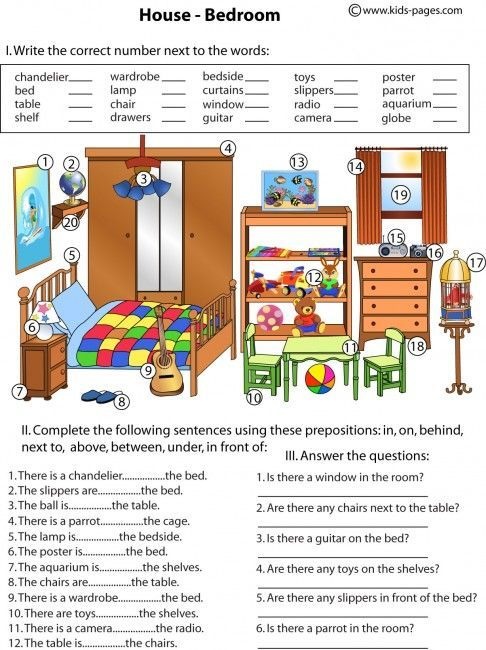
Source = Pinterest
How to Use Prepositions of Place Correctly
You know the prepositions, but how to use prepositions of place correctly when you’re stuck between two choices?
Here is the size rule.
AT = The tiniest, most specific spot. Example:
- Meet me at the corner.
- I’m at 425 Oak Street.
You could point to it on a map.
ON = A line or surface you can walk along. Example:
- The house is on Oak Street.
- Your book is on the table.
IN = The big container that holds everything else. Example:
- I live in Chicago.
- The pencil is in the drawer.
Here’s the test: Could you be completely surrounded by it? Use IN.
Does it have a flat surface you could touch? Use ON.
Is it a specific spot you could point to? Use AT.
You can also look at the physical boundaries:
- Can you walk inside it? → IN (the store, the house, the city)
- Does it have edges you can touch? → ON (the table, the wall, the floor)
- Is it just a location point? → AT (the bus stop, the intersection, the door)
But some expressions just refuse to follow logic:
- “At home” (not “in home”)
- “In bed” (not “on bed”)
- “On the bus” but “in the car”
Why? Usually it’s about how people historically thought about these spaces.
Buses used to be more like platforms you stood on. Cars always felt like enclosed spaces you sat inside.
When you’re stuck, ask yourself:
- Am I surrounded by walls or boundaries? → IN
- Am I touching a flat surface? → ON
- Am I at a specific point or address? → AT
- Does this sound like something I’ve heard before? → Trust your memory
The same logic often works for time. “At 3 o’clock” (specific point), “on Monday” (like a surface), “in January” (contained within).
If you know one, you can often guess the other.
The hardest part isn’t learning the rules—it’s trusting yourself when you have to choose quickly.
That’s where the right tool can make all the difference.
Struggling to figure out how to use prepositions of place?
Use our Ask AI tool for homework help, writing assignments, or school projects. Just type your sentence, and get a clear, simple explanation you can actually learn from.

Got a quick grammar doubt?
Use the AI Chat to ask, “Is it ‘at the mall’ or ‘in the mall’?” and get instant feedback.

Think of AI not as a crutch, but a study partner. It won’t replace your learning—but it will support you every time you hesitate.
Common Mistakes With Prepositions of Place
Let’s unpack where people often trip when learning how to use prepositions of place:
1. L1 Interference (First Language Confusion)
Your brain loves patterns. So when your native language uses one preposition for many ideas, you’ll try to transfer that rule into English.
Example: Some languages don’t distinguish between “in” and “at,” which leads to errors like “I’m in school” when the speaker means “I’m at school.”
2. Overgeneralization
Once learners get comfortable with a preposition like “on,” they overuse it. Ask yourself: Is the object enclosed (→ in), touching a surface (→ on), or a specific point (→ at)? Use physical clues, not object names, to decide.
3. Fixed Expressions
Learners treat all vehicles like containers. Use “on” for public/shared transport (bus, train, plane), and “in” for personal/private vehicles (car, taxi).
Correct: “She’s on the bus.” / “He’s in the car.”
4. Address Confusion
Both “at” and “on” describe location, but one is general and one is specific.
- Use “at” with exact addresses (with numbers): “She lives at 123 Main St.”
- Use “on” for named streets (no number): “The shop is on Main Street.”
5. Transportation Mix-Ups
Confusion between means of transport and physical location. Here’s the fix to that:
- Use “by” for the method: “I came by car.”
- Use “in” for location: “I was in the car for hours.”
6. Building vs Room Confusion
Learners don’t realize location scale matters.
- Use “at” for general presence (“I’m at the hospital” = location/purpose).
- Use “in” when referring to the building’s interior or a specific room (“She’s in the hospital room”).
Examples of Prepositions of Place
Let’s move from knowing the rules to seeing how to use prepositions of place in everyday life.
Here are some real-life examples:
- The remote is wedged between the couch cushions again.
- I left my coffee on the kitchen counter.
- Your jacket is hanging behind the door.
- The kids are playing in the backyard while dinner cooks on the stove.
Notice how that last sentence layers multiple prepositions? Your brain processes all of them without even thinking about it.
Challenge sentence:
I left my phone on the table beside the couch in the living room.
👉 How many prepositions can you spot?
- Everyday English
Examples:
- Can you meet me at the café near the mall?
- Two prepositions working together—AT for the specific meeting spot, NEAR for the relative location
- I’m stuck in traffic, but I parked right in front of the store.
- IN for being surrounded by cars, IN FRONT OF for the exact parking spot
We also use prepositions in expressions that don’t make literal sense.
- “I’m on the go” doesn’t mean you’re standing on top of movement.
- “We’re in a jam” has nothing to do with fruit preserves.
But these phrases make English feel natural and fluent, not just correct.
- In the classroom
Teachers use prepositions constantly when giving directions:
Example:
- Put your textbooks on your desk, pens next to your notebooks, and backpacks under your chairs.
- I’ll write the answer on the board while you work in your groups.
- The supply closet is behind my desk, and extra worksheets are in the blue folder.
This is perfect for Total Physical Response learning—when you physically move objects to match the preposition, your brain creates stronger memory connections.
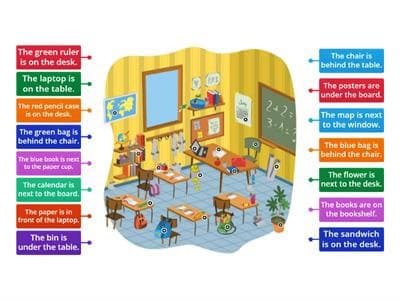
Source = Wordwall
- In public places
Example:
- The ATM is right beside the main entrance, next to the information desk.
- We found a quiet spot under the big oak tree in the center of the park.
- The bathroom is down the hall, past the elevator, and across from the water fountain.
When someone gives you directions, count how many prepositions they use.
Challenge Time: Read this paragraph and spot every preposition of place:
Lubna walked into the coffee shop, sat at a small table by the window, and placed her laptop on the surface in front of her. Her phone was in her purse, which hung on the back of her chair, while her keys sat beside her cup.
Found them all? There are eight prepositions doing location work in that short paragraph.
How to Practice Prepositions of Place
There are different ways by which you can practice the use prepositions of place:
Fill In The Blanks
- The keys are ___ the kitchen counter. (on / in / under)
- The cat is hiding ___ the bed. (under / above / on)
- We met ___ the train station. (at / in / on)
- There’s a clock ___ the wall. (on / in / beside)
- The books are ___ the bag. (in / on / next to)
Visit this site for more fill-in-the-blank exercises on prepositions of place.
Rearranging Sentence Parts
- coffee / in / the / mug / is
- on / my / sits / laptop / desk / the
- is / door / the / beside / table / the
- the / is / car / tree / the / under
- picture / the / above / hangs / fireplace / the
Correct Answers
- ➡ Correct: The coffee is in the mug.
- ➡ Correct: My laptop sits on the desk.
- ➡ Correct: The table is beside the door.
- ➡ Correct: The car is under the tree.
- ➡ Correct: The picture hangs above the fireplace.
Visual/Image-Based Prompts
Describe the position of each object based on the imaginary room.
Picture 1: Distinguish between on/near/next to

Picture 2: Practice “under” vs. “next to”

Picture 3: “Above,” “beside,” “below” distinctions
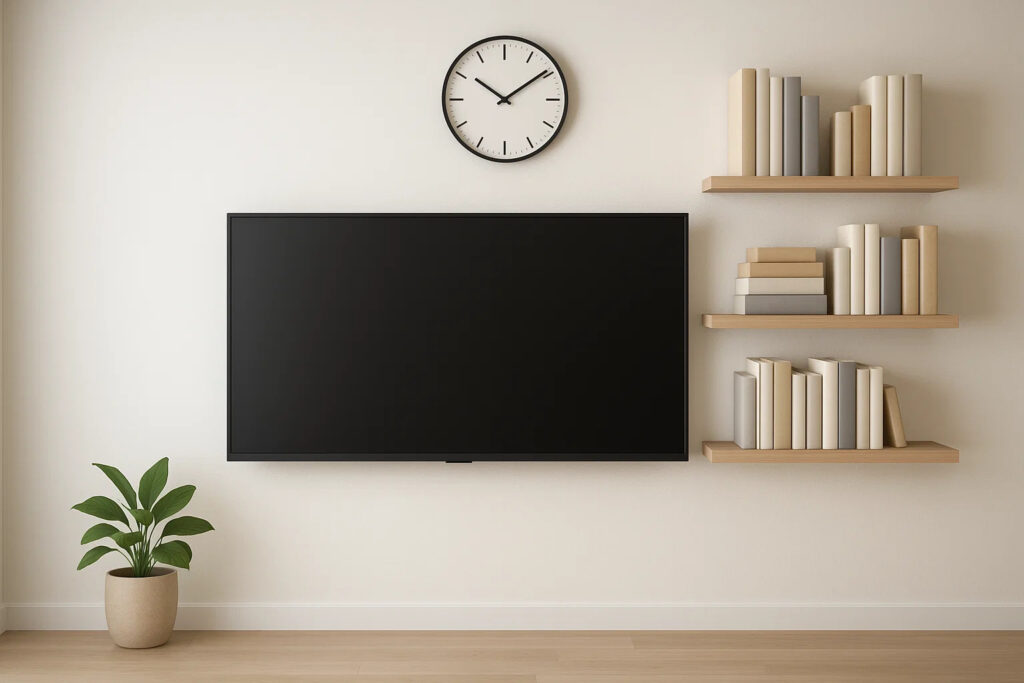
Picture 4: Practice “beside,” “behind,” “next to”
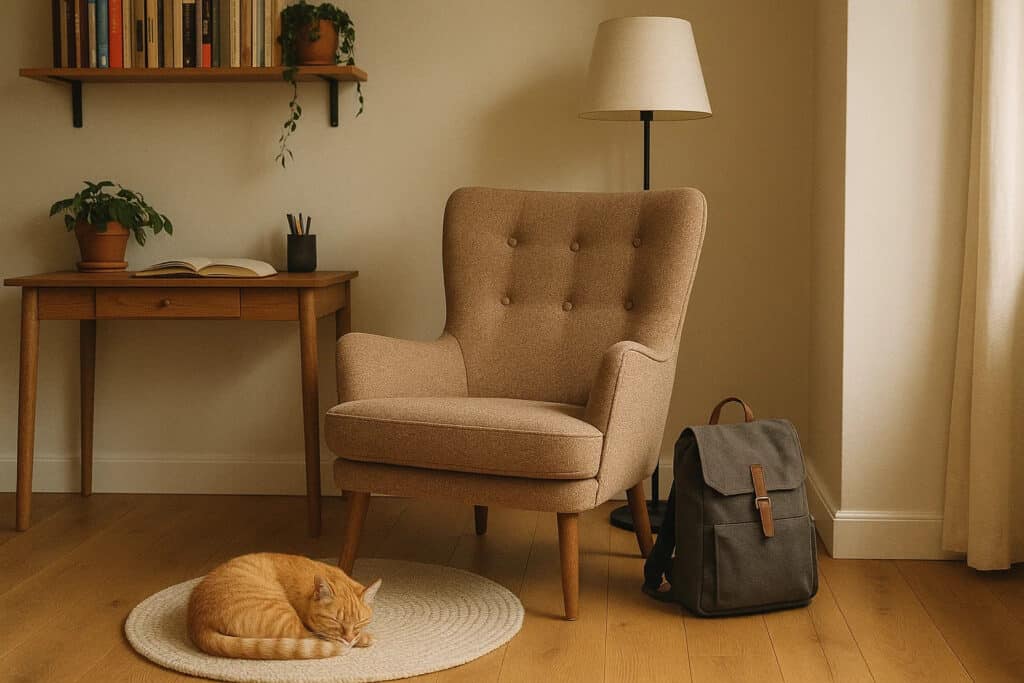
Picture 5: Explore “between,” “in front of,” “behind”

Access our AI Detector and Humanizer directly through the widget below.
Conclusion
So where does this leave you?
After reading this blog, now you know what are prepositions of place and why prepositions like ON, IN, UNDER, BESIDE, make your sentences clear and useful.
You use them every day, probably without noticing.
“Meet me at the café.”
“Your bag is on the chair.”
“It’s in the drawer.”
But here’s what really matters: you don’t need to be perfect.
Native speakers mess up prepositions too.
We say “on the bus” but “in the car” without thinking about why.
The goal isn’t to memorize every rule and exception. It’s to communicate clearly enough that people understand where you mean.
What’s your next step?
Start small. Pick one preposition pair that confuses you—maybe AT versus IN, or ON versus UNDER.
Practice with real objects around you right now.
Where’s your coffee cup? Your keys? Your phone?
Next time someone asks where something is, you won’t hesitate.
And your phone? It’ll never be lost “the table” again.
Need help polishing your writing and sounding natural?
Try Undetectable AI to humanize and refine your content—perfect for learners aiming to sound fluent and confident.
